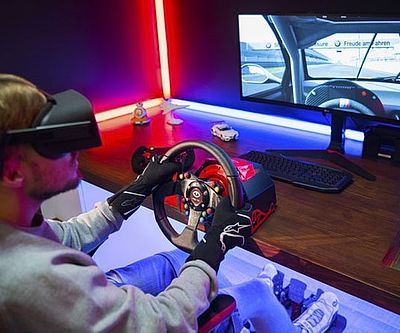
In the rapidly evolving landscape of gaming technology, virtual reality (VR) has emerged as a transformative force that immerses players in captivating virtual worlds.
This article explores the 12 vital aspects of VR gaming technology, from cutting-edge headsets to the exciting possibilities of the future.
Delving into topics such as game controllers, graphics, sound design, wireless capabilities, sensors, and game engines, this comprehensive guide offers technical insights and informative analysis for those seeking to explore the limitless potential of VR gaming.
VR Headsets
The VR headsets are essential tools that enable users to immerse themselves in virtual reality experiences. As the demand for VR gaming continues to rise, so does the need for comfortable and ergonomic headsets. VR headset ergonomics play a crucial role in enhancing the user's experience by providing a comfortable fit, reducing fatigue, and minimizing motion sickness. Manufacturers are constantly improving the design of VR headsets to ensure optimal comfort for extended use.
In terms of market trends, the VR headset industry is experiencing significant growth. With advancements in technology, VR headsets are becoming more affordable, accessible, and user-friendly. The market is witnessing a shift towards wireless and standalone headsets, eliminating the need for external devices. Additionally, the integration of high-resolution displays, improved tracking systems, and enhanced graphics capabilities are further enhancing the immersive experience.
As the VR headset market continues to evolve, it is expected to witness further innovations in ergonomics, performance, and affordability, catering to the growing demand for virtual reality experiences.
VR Game Controllers
With the advancements in VR headset technology, the next vital aspect to explore is the role of VR game controllers in enhancing the immersive gaming experience. VR game controllers are specifically designed to provide users with a more intuitive and natural way to interact with virtual environments.
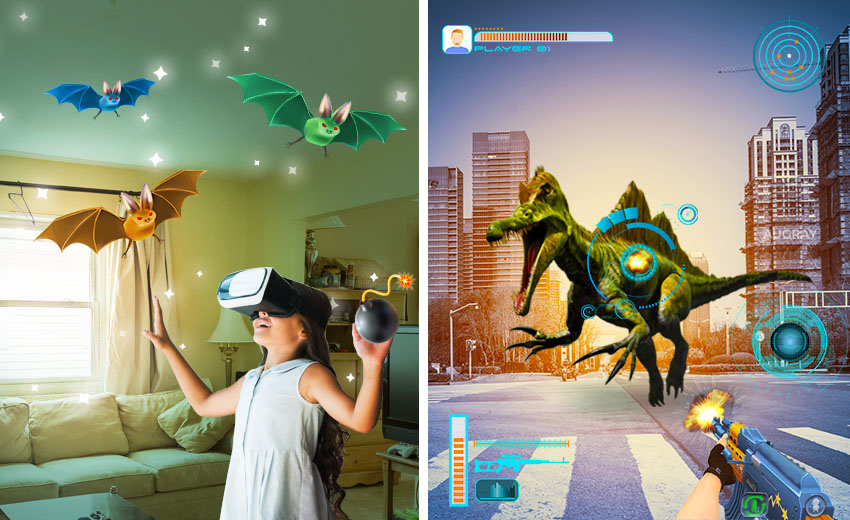
Here are three key aspects to consider when it comes to VR game controllers:
- VR game controller compatibility: One important factor to consider is the compatibility of the game controller with the VR headset being used. Different VR systems have different requirements, and it is crucial to ensure that the controller is compatible with the chosen VR platform.
- VR game controller design: The design of the controller plays a significant role in the overall gaming experience. Controllers should be comfortable to hold, easy to use, and have intuitive button layouts and ergonomics to prevent fatigue during extended gameplay sessions.
- Motion tracking capabilities: VR game controllers often incorporate motion tracking technology, allowing users to interact with virtual objects and environments by mimicking real-world movements. Accurate and responsive motion tracking enhances the sense of immersion and realism in VR games.
VR-ready Computers
When it comes to VR gaming, having a VR-ready computer is crucial. VR requires high-performance hardware to deliver an immersive and smooth experience. The hardware requirements for VR include a powerful processor, a high-end graphics card, and sufficient RAM.
Additionally, compatibility with different VR headsets should be considered, as not all computers support all headsets. For those who already have a computer, upgrading certain components may be necessary to meet the VR system requirements.
Hardware Requirements for VR
To ensure optimal performance and a seamless virtual reality experience, VR gaming necessitates the use of powerful and technologically advanced computer hardware. Here are three essential hardware requirements for VR:
- Graphics Processing Unit (GPU): A high-performance GPU is crucial for rendering complex virtual environments and delivering smooth graphics. VR games demand a GPU with at least 6GB of VRAM to handle the high-resolution displays of VR headsets.
- Central Processing Unit (CPU): A fast and powerful CPU is necessary to handle the intense computational tasks required by VR gaming. Look for CPUs with multiple cores and high clock speeds to ensure smooth gameplay and minimal latency.
- Memory (RAM): VR games consume a significant amount of memory, so it is recommended to have at least 16GB of RAM. This ensures that the computer can handle the simultaneous processing of the game, VR headset, and any additional applications.
By ensuring hardware compatibility and meeting these requirements, users can reduce the likelihood of encountering performance issues and have an immersive VR gaming experience.
In case of troubleshooting VR issues, it is essential to ensure that the hardware meets the recommended specifications.
Compatibility With Headsets
The compatibility of VR-ready computers with headsets is a crucial factor in ensuring a seamless and immersive virtual reality gaming experience. When it comes to compatibility, it is essential for VR-ready computers to meet the necessary hardware requirements to support the specific VR headset being used. This includes having a powerful graphics card, sufficient RAM, and a high-performance processor. Additionally, the compatibility extends to the software side, where the computer must have the necessary drivers and firmware updates to ensure smooth operation with the VR headset.

Improving comfort and reducing motion sickness are also important considerations in compatibility. VR headsets need to be designed with ergonomics in mind, providing a comfortable fit for extended periods of use. They should also incorporate features such as adjustable straps and padding to accommodate different head sizes and shapes. Furthermore, motion sickness can be minimized through the use of technologies like low-latency tracking and high refresh rates, which help to provide a more fluid and realistic VR experience.
Upgrading Existing Computers
Compatibility with headsets is just the beginning when it comes to upgrading existing computers for a virtual reality gaming experience. To ensure smooth gameplay and immersive graphics, upgrading hardware is crucial.
Here are three key aspects to consider when upgrading your computer to meet the system requirements of VR gaming:
- Graphics Card: A powerful graphics card is essential for rendering high-resolution visuals in real-time. Look for a card that supports VR-specific features such as low-latency rendering and high frame rates.
- Processor: A fast and capable processor is necessary to handle the intense calculations required for VR gaming. Look for a processor with multiple cores and a high clock speed to ensure smooth gameplay.
- Memory: Sufficient RAM is crucial for running VR games smoothly. Aim for at least 8 GB of RAM, although 16 GB or more is recommended for optimal performance.
VR Gaming Graphics
When it comes to VR gaming, realistic visual experiences play a crucial role in enhancing immersion and providing an unforgettable gameplay experience. The graphics in VR gaming need to be of high quality and offer a level of detail that closely resembles real-life.
From realistic textures to accurate lighting and shading, VR gaming graphics strive to create a virtual world that feels as close to reality as possible. This level of realism captivates the players and blurs the line between the physical and virtual worlds.
Realistic Visual Experiences
A crucial element in the realm of VR gaming technology is the utilization of high-resolution graphics to create immersive and lifelike visual experiences. These realistic visual experiences are integral to the success of virtual reality storytelling, as they transport players into a virtual world that feels believable and engaging. By employing advanced graphics technology, VR games can simulate environments and characters with stunning detail and realism, enhancing the overall gaming experience.
- Photorealistic Environments: VR games can recreate real-world locations or fantastical landscapes with incredible accuracy, allowing players to explore and interact with their surroundings in a way that feels authentic.
- Detailed Character Models: High-resolution graphics enable the creation of lifelike characters with intricate facial expressions, realistic movements, and convincing body language, enhancing the sense of immersion and emotional connection.
- Dynamic Lighting and Effects: Realistic lighting and particle effects add depth and realism to virtual environments, creating visually stunning scenes and enhancing the overall sensory feedback for players.
Enhancing Immersion Through Graphics
Utilizing cutting-edge graphics technology is crucial for enhancing immersion in VR gaming, allowing players to fully immerse themselves in realistic and visually captivating virtual worlds.

Realistic visual experiences in VR games are achieved through real-time rendering, which enables the generation of high-quality graphics in the virtual environment. Real-time rendering involves the creation of images and animations in real-time, ensuring that the visuals respond instantly to player movements and actions.
This technology optimizes the VR gaming experience by reducing latency and providing a seamless and immersive gameplay. VR game optimization further enhances immersion by ensuring smooth frame rates, minimal lag, and high-resolution graphics.
Sound Design in VR Games
Enhancing the immersive experience, sound design plays a crucial role in VR games. By creating a realistic auditory environment, it further immerses players into the virtual world. Here are three key aspects of sound design in VR games:
- Spatial audio in VR games: Spatial audio technology allows for the creation of 3D soundscapes, where sounds are positioned in relation to the player's location and movements. This enhances the sense of presence and realism, making the virtual world feel more lifelike.
- Impact of sound design on player immersion: Sound design has a significant impact on player immersion in VR games. By accurately representing various auditory cues, such as footsteps, rustling leaves, or distant explosions, sound design helps players locate objects and navigate the virtual environment, making the experience more engaging and believable.
- Interactive sound design: In VR games, sound design can be interactive, responding to the player's actions and movements. This adds another layer of immersion, as players can rely on sound cues to make decisions or detect approaching enemies.
Motion Tracking in VR Gaming
Motion tracking plays a crucial role in the immersive gameplay experiences offered by virtual reality gaming.
The accuracy of motion tracking technology determines the level of realism and responsiveness in the virtual environment.
By accurately tracking the movements of the player, VR gaming systems can offer a more engaging and interactive experience.
This allows players to physically interact with the virtual world and enhances the overall gameplay.

Accuracy of Motion Tracking
With the rapid advancement of VR gaming technology, ensuring the precise tracking of player movements has become an integral aspect for an immersive gaming experience. Accurate motion tracking technology plays a crucial role in enhancing the level of realism and immersion in virtual reality games.
Here are three key points regarding the accuracy of motion tracking in VR gaming:
- Challenges in motion tracking technology:
- Overcoming latency issues to ensure real-time tracking of player movements.
- Dealing with occlusion problems, where the sensors may lose track of the player's movements when objects obstruct the line of sight.
- Maintaining accuracy in complex movements, such as intricate hand gestures or full-body interactions.
- Impact of motion tracking on VR gameplay:
- Enables players to interact with the virtual environment using natural movements, enhancing the sense of presence and immersion.
- Provides a more intuitive and engaging gaming experience by allowing players to physically dodge, aim, and perform actions within the virtual world.
- Facilitates the development of innovative gameplay mechanics that leverage the capabilities of motion tracking technology.
Immersive Gameplay Experiences
Immersive gameplay experiences in VR gaming are achieved through the implementation of motion tracking technology. This technology allows players to interact with virtual environments and objects in a more natural and intuitive way. By tracking the movements of the player's body or controller, VR systems can accurately replicate these movements in the virtual world, creating a sense of presence and immersion.
One key aspect of immersive gameplay experiences is the integration of 3D sound effects. These sound effects are designed to create a realistic audio environment, enhancing the player's sense of immersion. By accurately positioning sounds in 3D space, players can better locate and react to in-game events, improving their overall gameplay experience.
Another important element is haptic feedback in VR. Haptic feedback refers to the use of vibrations or other tactile sensations to provide physical feedback to the player. This can enhance the sense of realism and immersion by simulating the feeling of touch or impact. For example, a player may feel a slight vibration when firing a virtual gun or a gentle pulse when interacting with virtual objects.
VR Gaming Software
One essential element of VR gaming technology is the software, which plays a crucial role in creating realistic and interactive virtual experiences. VR gaming software encompasses the tools and technologies used in virtual reality game development.
Here are three key aspects of VR gaming software:
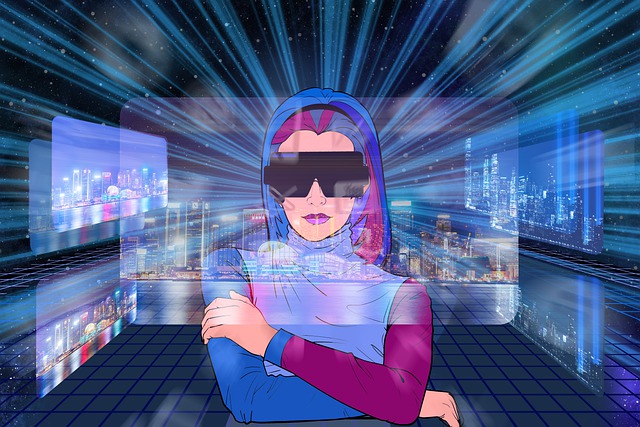
- Game Engines: Game engines are the backbone of virtual reality game development. They provide the framework for creating virtual worlds, rendering graphics, and handling physics and interactions. Popular game engines like Unity and Unreal Engine have dedicated VR support, making it easier for developers to create immersive VR experiences.
- SDKs and APIs: Software Development Kits (SDKs) and Application Programming Interfaces (APIs) are essential for integrating hardware devices, such as VR headsets and controllers, with the game software. These tools allow developers to access and utilize the features of VR hardware, enabling more realistic and interactive gameplay.
- Content Creation Tools: VR gaming software includes various content creation tools like 3D modeling software, animation tools, and audio editing software. These tools enable developers to design lifelike environments, create realistic character models, and add immersive sound effects, enhancing the overall VR gaming experience.
VR gaming platforms provide the foundation for gamers to access and experience virtual reality games and applications. These platforms are essential for creating a seamless and immersive gaming experience.
One key aspect of VR gaming platforms is the availability of various accessories that enhance the overall gameplay. VR gaming accessories such as motion controllers, haptic feedback devices, and specialized input devices enable players to interact with the virtual world in a more intuitive and realistic manner.
Additionally, VR gaming platforms offer opportunities for social interaction among players. Whether through multiplayer modes or virtual environments specifically designed for socializing, these platforms allow gamers to connect with others and share their experiences. The integration of social features enhances the sense of community and fosters a collaborative gaming environment.
Wireless VR Gaming
Wireless technology has revolutionized the world of VR gaming, offering a more seamless and untethered experience for players. With wireless connectivity, gamers are no longer constrained by cables and can freely move around their virtual environments. This newfound freedom allows for a more immersive and natural gaming experience.
Here are three key aspects of wireless VR gaming:
- Enhanced mobility: Wireless VR headsets enable players to move around without the worry of getting tangled in cables. This freedom of movement not only enhances immersion but also allows for more physical interaction within the virtual world.
- Convenience: With wireless connectivity, setting up and starting a VR gaming session becomes much easier. There is no need to worry about cable management or finding the right ports. Simply put on the headset and start playing.
- Motion sickness prevention: Wireless VR headsets can help reduce the risk of motion sickness. By eliminating the cables that restrict movement, players can have a more comfortable and enjoyable gaming experience.
VR Gaming Sensors
The implementation of gaming sensors in virtual reality technology has greatly enhanced the immersive and interactive experience for players.
VR gaming sensor technology has seen significant advancements in motion tracking, allowing for more accurate and realistic movements within virtual environments. These sensors utilize a combination of technologies such as accelerometers, gyroscopes, and optical tracking systems to track the position and orientation of the user's body and translate them into the virtual world.
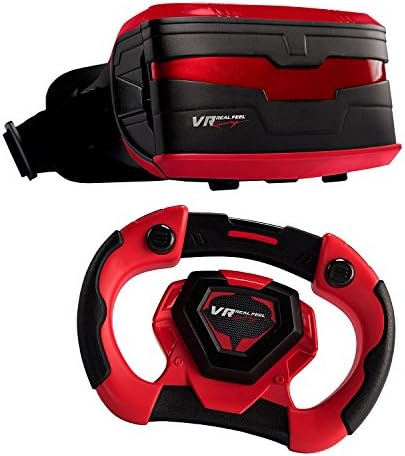
This enables players to engage in a wide range of activities, from swinging a sword to throwing a ball, with precise and natural movements. The advancements in motion tracking have also led to improved hand tracking, allowing users to interact with virtual objects using their hands without the need for additional controllers.
As VR gaming sensor technology continues to evolve, we can expect even greater levels of immersion and interactivity in the future.
VR Game Engines
With the advancement of virtual reality technology, game engines have become a crucial component for creating and delivering immersive gaming experiences. VR game development relies heavily on the capabilities and features provided by these engines to bring virtual worlds to life.
Here are three key aspects of VR game engines that contribute to the overall experience:
- Graphics Rendering: VR game engines must be capable of rendering high-quality, realistic graphics in real-time to maintain immersion. They utilize advanced rendering techniques such as physically-based rendering and dynamic lighting to create visually stunning environments.
- VR Interaction: Game engines for VR incorporate intuitive interaction systems that enable players to interact with virtual objects and environments. These systems leverage motion tracking and hand tracking technologies to provide realistic and immersive interactions.
- VR Game Physics: Realistic physics simulation is essential for creating believable virtual worlds. VR game engines include physics engines that accurately simulate object behavior, gravity, collisions, and other physical phenomena, enhancing the sense of presence and immersion for players.
Future of VR Gaming
As VR game engines continue to evolve, developers are eagerly exploring the potential of virtual reality technology in creating more immersive and realistic gaming experiences.
The future of VR gaming holds exciting possibilities, with advancements in haptic feedback technology being one of the key areas of focus. Haptic feedback allows players to feel physical sensations within the virtual world, enhancing their sense of presence and immersion. This technology is already being integrated into VR controllers, providing users with a more tactile gaming experience.
In addition to haptic feedback, the future of VR gaming also includes the rise of virtual reality arcades. These dedicated spaces allow users to experience VR games and simulations in a social setting, providing a unique and shared virtual reality experience.
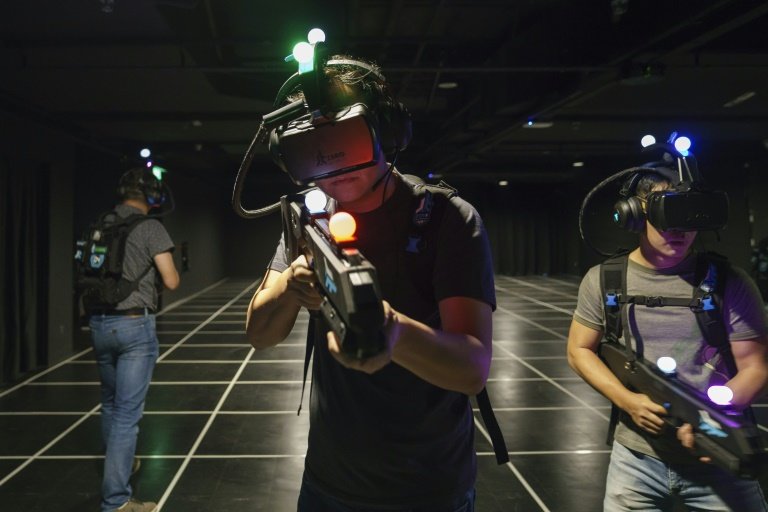
With constant advancements in technology, the future of VR gaming is set to revolutionize the way we play and interact with games.
Frequently Asked Questions
How Does VR Technology Affect the Brain and Overall Health of Gamers?
VR technology has the potential to impact brain development and overall health of gamers. However, long-term effects are still being studied. It is important to consider the potential risks and benefits of VR gaming for individuals' mental and physical well-being.
What Are the Potential Risks or Side Effects of Prolonged VR Gaming?
Prolonged VR gaming may have potential risks and side effects. These could include eye strain, motion sickness, and disorientation. It is important for gamers to take breaks and limit their exposure to ensure their overall health and well-being.
Are There Any Specific Age Restrictions or Recommendations for Using VR Gaming Technology?
Age restrictions and health concerns are important considerations when using VR gaming technology. It is recommended that children under the age of 12 should not use VR headsets due to potential adverse effects on their development and physical well-being.
Can VR Gaming Be Used for Purposes Other Than Entertainment, Such as Education or Therapy?
Education applications and therapeutic benefits are two key areas where VR gaming technology shows promise. By immersing users in virtual environments, it offers interactive and engaging experiences that enhance learning and therapy outcomes.
How Does the Cost of VR Gaming Equipment Compare to Traditional Gaming Setups?
The cost of VR gaming equipment varies depending on the quality and features of the headset and peripherals. While VR setups can be more expensive than traditional gaming setups, they offer unique advantages such as immersive experiences and interactive gameplay.
 Business & FinanceHealth & MedicineTechnologyLifestyle & CultureScience & EnvironmentWorld NewsPrivacy PolicyTerms And Conditions
Business & FinanceHealth & MedicineTechnologyLifestyle & CultureScience & EnvironmentWorld NewsPrivacy PolicyTerms And Conditions
